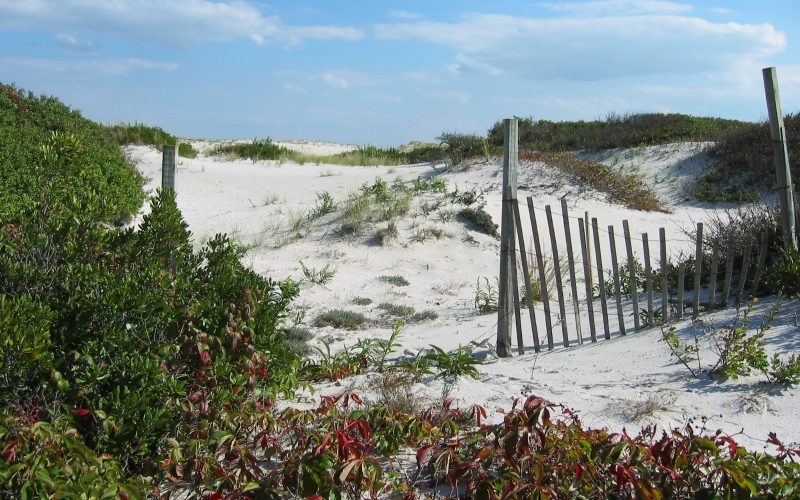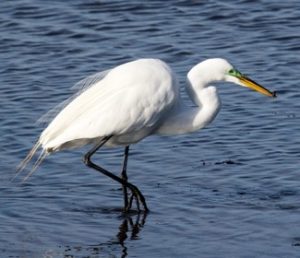
Undeveloped stretches of the barrier island complex consist of extensive primary and secondary dune habitat along the ocean side and salt marsh and tidal flats on the backside of the barrier. Island Beach State Park provides the most extensive example of the natural vegetation typical of New Jersey’s barrier islands and spits.
Eight plant community zones exist on Island Beach State Park, including primary dune, secondary dune, road edge, thicket, freshwater wetlands, bayshore, tidal marsh/estuary, and maritime forest. American beach grass (Ammophila breviligata) dominates the primary dune plant community, with the Beach pea (Lathyrus maritimus), Japanese sedge (Carex kobomugi), seaside goldenrod (Solidago sempervirens) and sea rocket (Cakile edentula) also observed in this zone. Seabeach knotweed (Polygonum glaucum), a state listed endangered species, is found at Island Beach and also at Holgate.
The secondary dune community is much more diverse; nearly 30 species of plants have been identified here. Representative species occurring in this community include beach plum (Prunus maritima), bayberry (Myrica pensylvanica), beach heather (Hudsonia tomentosa), pineweed (Hypericum gentianoides), and salt spray rose (Rosa rugosa). The thicket, edge, and freshwater wetland communities have 73, 140, and 55 species, respectively. The bayshore community (22 species) and tidal marsh community (20 species) are much less diverse. American holly (Ilex opaca forma sabintegra), Atlantic white cedar (Chamaecyparis thyoides), White oak (Quercus alba), pitch pine (Pinus rigida), and several other species exist in the coastal woodland or maritime forest community.
While a flourishing plant community exists at Island Beach State Park and to a lesser extent at Holgate, the dune and maritime forest communities of the barrier islands fronting Barnegat Bay have largely been destroyed or substantially altered. The natural dune system has been obliterated along great stretches of New Jersey’s Atlantic shoreline. Dune grass vegetation serves a useful role in stabilizing dunes and protecting beaches against wind and wave erosion. Where feasible, dunes are being reconstructed and revegetated to help impede beach erosion. Barrier island vegetation communities such as maritime shrublands and woodlands provide important stop-over habitat for numerous species of songbirds and raptors migrating along the Atlantic coastal flyway.
This is an excerpt from Chapter 6 of the “Scientific Characterization of the Barnegat Bay-Little Egg Harbor Estuary and Watershed” (September 2001).

